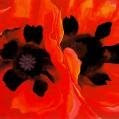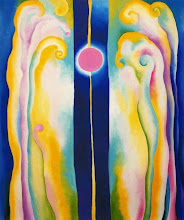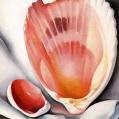

Minstrels: Today we reviewed the way to write and clap whole notes, half notes, quarter notes, and eighth notes. We listened to a song played on the recorder: Iroquois Lullaby, and we clapped its 4/4 time and talked about the Music element of "beat". The students also sang the song and clapped the time as I played the song on my recorder. The goal is that someday we will all play this song together. We reviewed how to hold the recorder and how the holes need to be fully covered with the fat parts of our fingers in order for the sound to be clear and not squeaky.
Scribes: We began drawing today with a sample exercise from Mona Brooks' book, Drawing with Children. I'm sharing the Amazon link with you, not because I want you to buy the book, but because you may want to scroll down and read some of the reviews. It is interesting to note that several adults who tried to use this book to teach their children to draw were amazed with the results for their own drawing. I also shared another excercise page of unidentifiable or "abstract" shapes that I developed with the drawing tools in the Word program. I can email this to everyone. I hope people will blog about the experience of using these exercises: there may be some frustration but also some surprises. How might you extend this exercise? Next, we did an exercise that I call "Mystery Drawing". Students fold a blank sheet of paper in four and the teacher puts two intersecting lines on the white board or chalkboard. Students then follow each mark that the teacher puts on the board, using the lines or the fold lines to guide them in the placement of the line on the page. Check out blogs to see what people experienced in this exercise, remembering that they didn't know that it would be a caricature or cartoon of a grumpy old man until the last few lines were in place. There were no "Show and Share" contributions yet today so I read aloud "Ish". Although we spent most of the half hour observing carefully, "ish" helps to teach that drawings need not be precise replicas of what we see. You might like to comment on the tension in that - How can we teach students to be observant and increase their technical skills in drawing and still have them value spontaneous, flowing lines and shapes that are "vase -ish" renditions of a vase, or "tree-ish" depictions of a tree?




8 comments:
I think that you should at first offer some guidance to your students when it comes to drawing, so they pay more attention to detail. Before students begin to sketch, say such phrases, as "Note the roundness of the bottom of the vase" or "Note how the tree trunk is not smooth, but gnarled" (so they draw a less round trunk). As the students progress in detailed drawing, you could then move into lessons about spontaneous depictions. Dedicating part of a lesson to looking at drawings that are more spontaneous, and pointing out the wonderful qualities in these depictions would be a good idea. In celebrating professional spontaneous artists, the students learn that "ish" renditions indeed have value. The students could then try to do "ish" depictions themselves.
Willow, I just wanted to mention that when I worked for Two Rivers this summer we did lessons all about line. And the pre-lesson we sent out to the schools for intermediate classes were using the book "Ish". The same author has a book called "The Dot", which was sent out to primary classes. I have the books and accompanying lesson plans if you or anyone else is interested in looking at them.
I think the art activity we did yesterday was inspiring and showed me that I do have the capability to draw! I was proud of my drawings and found it easy to follow step-by-step instructions. The face drawing was awesome and as a lesson would allow students to predict what the picture is and allow them to work on hand-eye coordination. In thinking about the readings, students can become creative by looking at examples of other people’s work (piggy backing) and create their own masterpieces. Teaching students about lines could be the first lesson and then have them replicate simple pictures. Once they feel comfortable, students can be given more complicated pictures such as a bear, umbrella, and apple to replicate. I would love to try this activity in my practicum class.
I really enjoyed the idea of having students copy a line drawing by starting with smaller sections instead of looking at an entire picture and having to copy the whole picture. Breaking the drawing into parts made it much less intimidating to me and I was able to make my drawing look very close to the one Willow did. I could see incorporating this idea into a drawing lesson for students to show them that anyone can draw. I think it would be a very motivating lesson that could then lead into more sophisticated drawing exercises. Also, Holly, I would really like to see the lesson plans for the "Ish" and "The Dot" books if possible.
I really enjoyed doing the "Mystery Drawing" because it showed me that I am capable of drawing a masterpiece. I do not consider myself to be a very good artist in the drawing department so by providing me with the opportunity to draw step-by-step not only boosted my self-confidence but allowed me to get my creative juices flowing and create a piece of art that I am very proud of. It was fun to stop part way through the drawing to make predictions as a class. Going over the drawing afterwards with a marker really makes the drawing come alive!
Like Linda and Sherri, I was surprised by the results of the guided drawing. If I had seen the image first I would have felt it was much too difficult... Instead of being overwhelmed, I took it one lien at a time. This scaffolding sure helped this reluctant drawer.
Like Nicola, Sherri, and Allison I really enjoyed the Mystery drawing lesson. I must admit, I would never have believed I could draw something so detailed. In fact, I would have immediately dismissed it as being way out of my league. I would use it in a classroom to try to reproduce the effects it had on me - increase feelings of competence when it comes to art and get students excited for the next art class.
Post a Comment